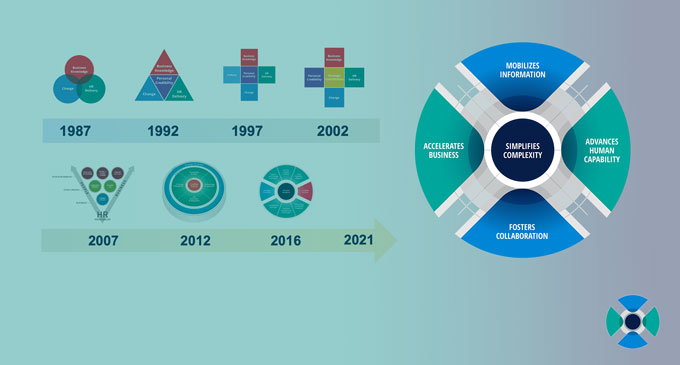What does the new HR Competency Model mean for me?
Key Takeaways:
- HR professionals can begin their personal development by answering the question: “What is the most important thing for me to focus on that my stakeholders care about?” This is what will bring focused value to the organization.
- Creating a personal action plan to be a more effective HR professional should focus on one or two of the five new HR competencies outlined in the newest HR Competency Model and an outside-in HR perspective.
- When each HR professional takes responsibility for progressing in an area that matters to their stakeholders, the organization will be more likely to reach their desired results.

What does the new HR Competency Model mean for me?

Related Insights
What is true for HR professionals?
Since 1987, the Ross School at the University of Michigan, Dave Ulrich and colleagues, have conducted the global HR Competency Study. It provides a detailed glimpse into the competencies of HR professionals that drive personal and business results. We’d like to help you dive into the five personal domain areas identified in Round 8 to generate some ideas for your own development.
Maybe you have received feedback that you need to improve in one competency domain, or perhaps it’s a strength that is so important to your stakeholders that you want to invest in making your skills in this area world class. Here are some ideas that may help for each of the five domains.
Accelerates Business
If you’re looking to build your ability to Accelerate the Business, knowing the external environment is crucial. Then you must utilize what you know to influence the business to get the right things done—fast. This is the foundation needed for your business to stay agile and win in the marketplace. We offer a couple of suggestions to help you focus your personal development in this area:
Become a student of your organization and industry—remember back in college when you dove into research on a particular subject and learned all you could in preparation for writing a paper? The same tenacity is needed if you want to understand enough of your business to generate competitive insights and then try to influence people and departments to follow those insights. So, subscribe to industry publications, follow thought leaders and CEOs from rival organizations on their social media accounts, read through your company’s 10K (if publicly traded); and do all of this with a critical eye toward how you can gather insights to drive business results.
Change as a way of working—we used to categorize change as an event or something that lasted for a finite span of time. It is now part of our lives, our organizations, and the way we work each day. With that in mind, taking key steps can help us navigate change as we initiate the change and then seek to sustain it for our organization. Here are seven steps to help develop a stronger discipline around change:
- Leading Change – making sure we have strong leadership support behind our initiative and a well-constructed team to work on the initiative
- Creating a Felt Need – helping stakeholders understand the “why” behind the change and feel a connection to the need
- Defining Direction – clearly communicating the outcome of the initiative in aspirational and action terms
- Engaging Stakeholders – getting buy-in from all groups required to deliver the initiative, and communicating with those impacted by it
- Making Decisions – understanding the decisions that need to be made and who has the authority to make those decisions, contribute to them, etc.
- Institutionalizing – embedding the initiative into technology, HR, and financial systems and processes in the company
- Monitoring and Learning – tracking the success of the change and making tweaks and modifications as we learn from experience
Implementing these seven disciplines—even as a checklist—can lead to more effective change when utilized consistently in your organization.
Get the right things done—in his book, Essentialism, Greg McKeown shares the history of the word “priority”. When it first entered the lexicon, it was singular. There were no such things as multiple priorities. Fast forward to today where we get into the fruitless game of trying to put everything at the top of our list—making us less effective overall. One development effort you might consider is to sit down at a set time each morning, or even at the end of the day, and review what is most important. What is your priority for today (or the next day) going to be? Once you have made progress on that priority, assess and select what is next. In the end, the thing you are working on right now is your priority. If we let urgent, but not important, emails take us off track from our priority; or someone else’s priority pull us away from our focus; we won’t be as effective at getting the right things done. Sometimes your priority will be family, community, exercise or supporting the strategic initiative your boss has given to you. In any case, if you are able to focus your time, effort and energy on that one priority; your progress will be measurable.
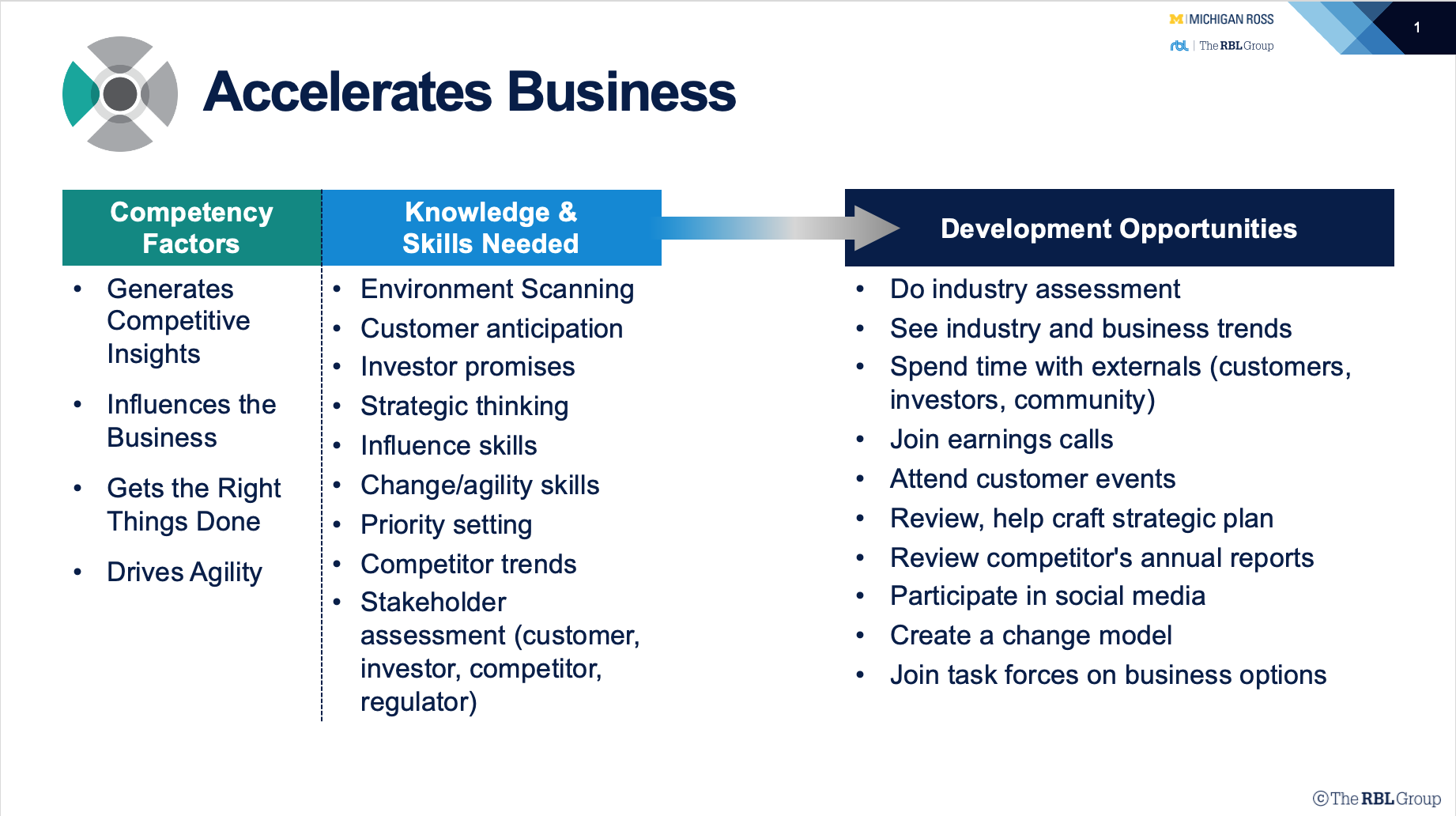
Advances Human Capability
When we consider how we can be best prepared to Advance Human Capability across the organization, it’s less about knowing the right processes and practices, and more about developing enterprise solutions to elevate talent and help everyone feel connected. You might consider:
Think combination over separation—our minds like to process things in smaller chunks. That’s why we break down tasks and to-do lists so we can feel like we’re making progress. There is great value in this within HR, if we first make sure our practices, structures and systems are combined in an integrated way. To Advance Human Capability, we can’t design solutions if discrete teams are working on pieces without considering the whole. The opportunity when you’re working on a piece is to lend voice to the need to combine and ensure we aren’t putting band-aids on what won’t support a long-term solution. For example, if you are working on launching a new rewards tracking system, make sure you are connecting with stakeholders to understand and align with: how line leaders are making awards, what is available, who is eligible, how will they be visible to leadership and employees, etc.
Conduct personal temperature checks on Diversity, Equity and Inclusion—every person carries some bias with them. This can come from our family of origin, our dominant cultural, education, personal experiences, and a host of other factors. Our leadership development opportunity is to recognize our bias and then seek to mitigate that bias. Tools like Project Implicit by Harvard allow you to take a variety of assessments that may help you recognize implicit preference for one category relative to another. Also taking time to reflect on interactions you’ve had and responses you’ve made in certain situations can help you be more inclusive in your efforts to help everyone feel like they belong.
Elevate the talent around you—there is a consistent need in our organizations for growth and development. In fact, feeling like they’re growing is a key reason why people stay with organizations…and also a major factor in why they leave if they aren’t experiencing personal improvement. One of the best ways to build capability individually is through coaching. The best coaches are willing to allow the individual they are working with to come up with their own solutions to the problems they are facing. True coaching isn’t about giving advice (that’s mentoring), or offering solutions (that’s consulting), but instead partnering with an individual to help them create a plan to move forward. A coach capable of elevating talent is one who listens deeply, asks a lot of curious questions, holds the individual they’re working with accountable for solving their own problems, and then supports them in the forward path they choose. Consider the last few development conversations you’ve had with direct reports, peers or even your boss. What was your question to answer ratio? Did you talk more or listen more? Were solutions offered from your past experience? Taking the time to personally analyze those should-be coaching conversations to make sure your role is supportive rather than directive will help as you seek to improve your ability to elevate talent.

Mobilizes Information
Our next competency focus is around Mobilizing Information. HR has improved a lot since our last study five years ago around the gathering of data. We are now awash in data, but are we utilizing that data and our technology to help us solve problems? To do this, we need a mindset shift:
Everyone can be insightful—at Google, they have a mantra that everyone can innovate—even people in finance. In HR we need to develop a mindset that everyone needs to be looking for insights—through data, experience and observation. We can no longer just have analysts who aggregate data in reports, we need everyone to consider themselves analyzers of the data. How do you develop this mindset yourself? Practice it every day, inside and outside of the office. (1) Be observant—take a walk around, observe colleagues (not in a creepy way, just casually), listen for patterns as you discuss what’s happening in the organization with various line leaders. (2) Ask questions—curiosity makes us smarter. Don’t assume you know why we do something the way we do, ask to either confirm or learn something new. (3) Practice problem solving—don’t just come up with one solution to fix a problem, come up with two or three. Debate the merits of each with colleagues prior to presenting them. (4) Assess yourself—at the end of the day make a quick note to yourself of how many of these behaviors you exhibited. Try to increase that by one a day or one a week.
Connect insights to your business—earlier, we mentioned the need to be a student of your organization and your industry. It is not enough to know something, you need to connect it to your organization. If you read about stakeholder capitalism, AI, predictive analytics, declining birthrates, etc., do you take the time to ask what will this mean for my company? Let us suggest this challenge: next time you listen to a podcast (whether it’s about soft skills, business trends, global economics, or whatever), take 30 seconds to write down two potential implications of what you heard in relation to your organization. If we do this more often we’ll develop a stronger point of view about the future, and be able to mobilize what we’re learning into solving the problems of today, and those of the future in our organizations.
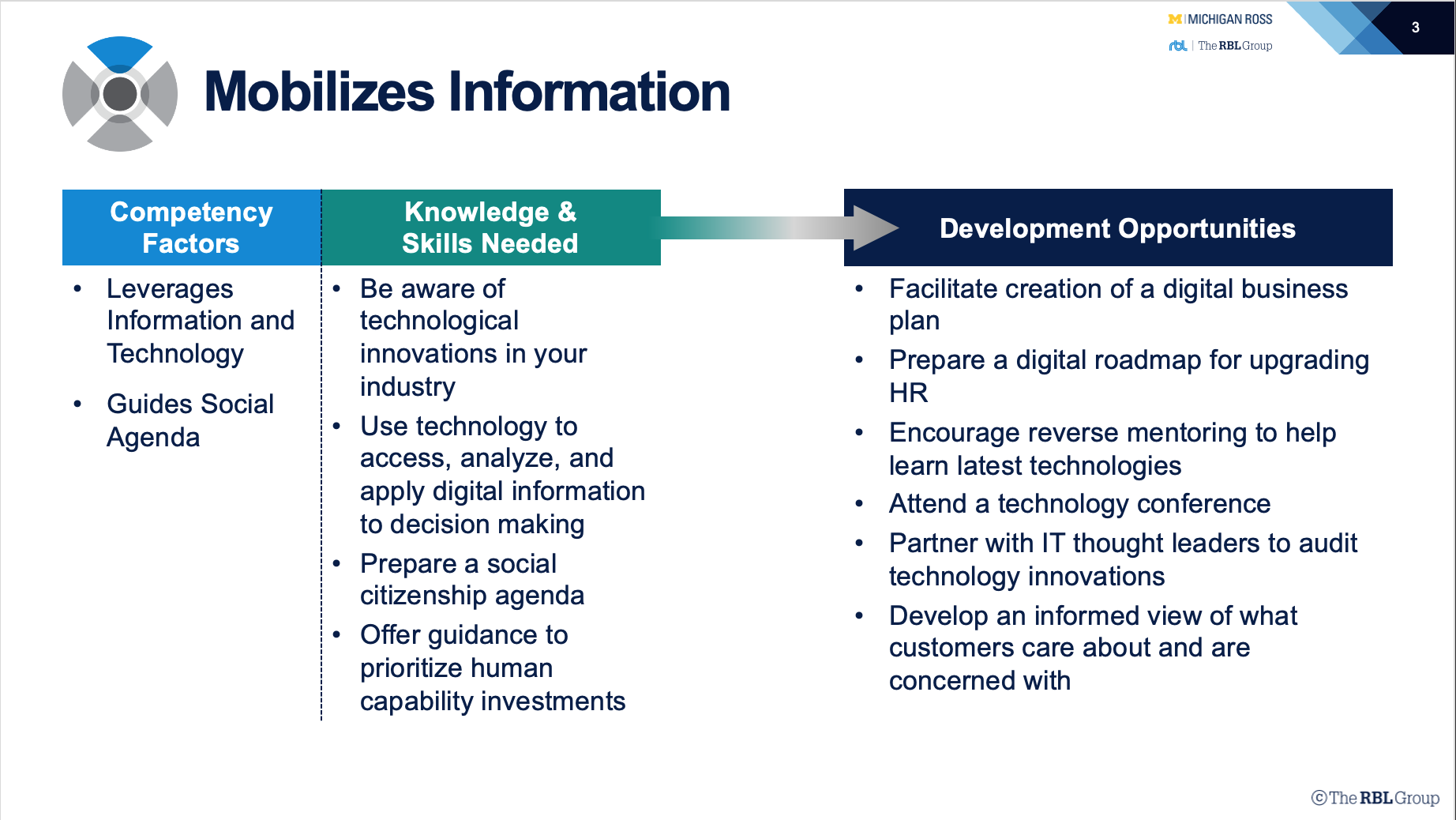
Fosters Collaboration
A few years ago, a lot of organizations were asking us to train their leaders on how to collaborate better. At that time when you Googled collaboration, technology solutions came up, but not a lot about skills that could help. Our research has told us that if you want to Foster Collaboration, you must build relationships of trust and then utilize those to decide what we should collaborate on and what we shouldn’t. Not everything is ripe for collaboration. It takes time, effort and resources, so we need to be intentional about when we should and even more importantly, when we shouldn’t.
Build trust—we’ve always appreciated simplicity (see the next competency for proof). David Maister and colleagues suggested a simple formula for trust in their book The Trusted Advisor. It outlines that trust includes: credibility, reliability, intimacy/rapport and perception of self-interest. If we are without any of those elements, we will have a very difficult time establishing trust. For your own leadership development, you might consider a relationship where there are issues with trust currently. Use the formula to diagnose what the problem might be. Do you not believe the individual can do what they say they can do (credibility)? Have you been burned by them because they didn’t deliver on time (reliability)? Do you only speak of work tasks and know nothing more about each other (intimacy/rapport)? Or do you think they’re only out to achieve their goals and don’t care about the whole of the organization (self-interest)? If you can pinpoint one certain area, you can have a better conversation with the individual, and/or ask more questions in your next interaction to make sure both sides can trust to collaborate.
Welcome feedback—it’s one of those words that can send shivers up any spine: feedback. If you are in a leadership position, your subordinates may not feel comfortable sharing feedback with you, or even your peers. Opening up a conversation around feedback can do wonders. Just like we talked about practicing a mindset shifts on insights earlier by practicing inside and outside the office, the same can be done here. When was the last time you asked a family member for feedback on your performance, interactions with them, or your responsibilities? When done with a humble demeanor and willingness to truly listen and make changes, these conversations can go remarkably well. Start with one thing they suggest you work on (whether this is family or co-workers), say thank you and then ask if they have ideas on how you might improve.
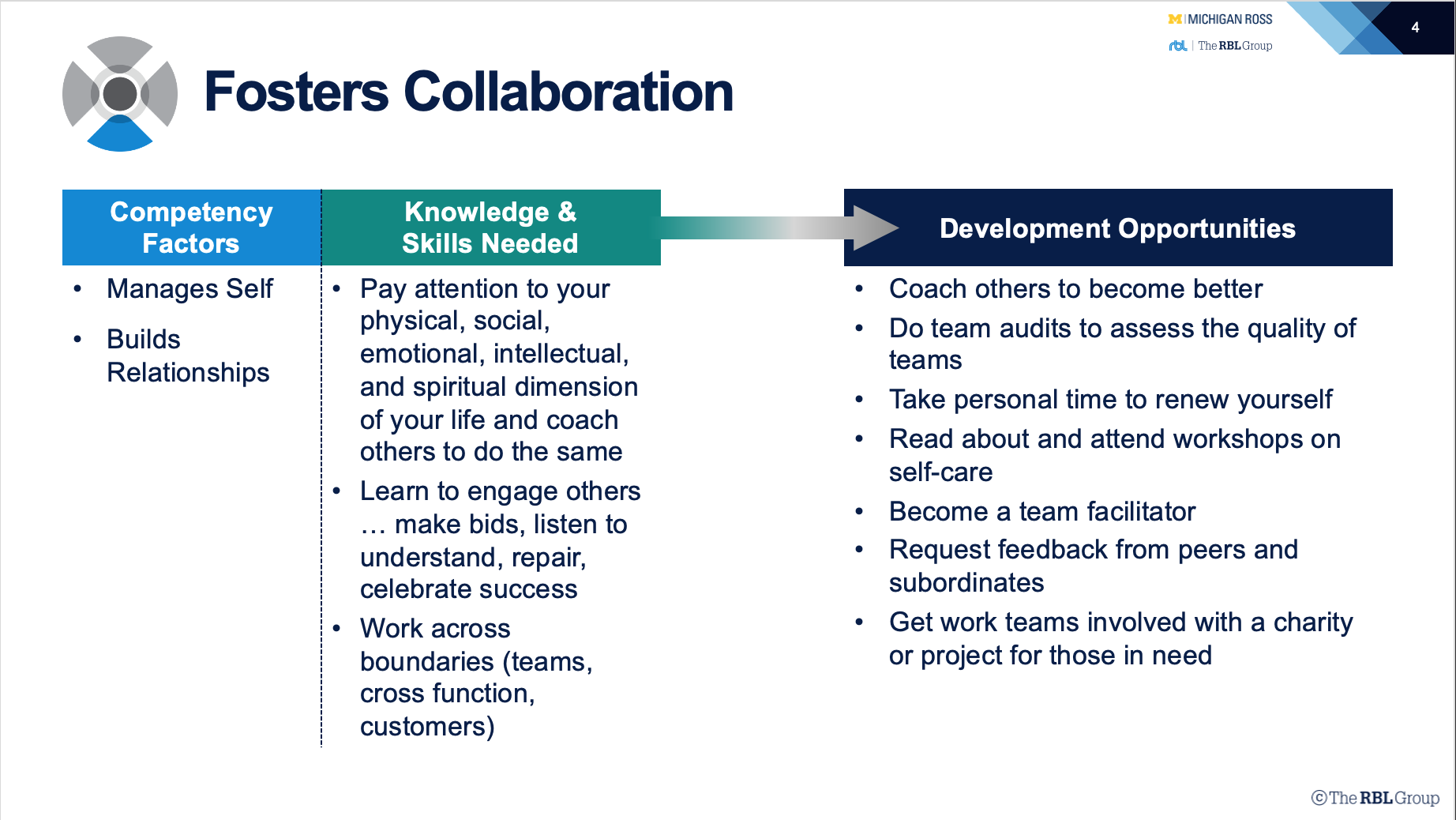
Simplifies Complexity
Finally, a successful HR professional finds ways to Simplify Complexity for their stakeholders.
Replace fear with fortitude—the past 18 months has taught us that uncertainty is likely going to be part of our daily lives going forward. There are many who fear that uncertainty. In HR, we need to harness it in a courageous way. If things seem to be piling up, or spinning out of control, how can you slow things down? One development idea might be to find a change agent in your organization or through your network—true agents of change are not afraid; they actually thrive on uncertainty. They are willing to tackle the wicked problems—those that feel like a bowl of spaghetti that needs to be straightened out. Study them, learn their ways, and delve into discussion with them.
Be brief—when you are planning a to share a plan or ideas, put the whole document/slides/presentation together as you usually would and then stop. Take a breath. And boil down the one, two or three major points you want your audience to walk away with. Then make an Executive Summary or Brief to share, and put the rest of your lengthy presentation into the appendix. If your audience wants more, you will have it. But if not, you’ve just gone through an exercise of finding simplicity through complexity.
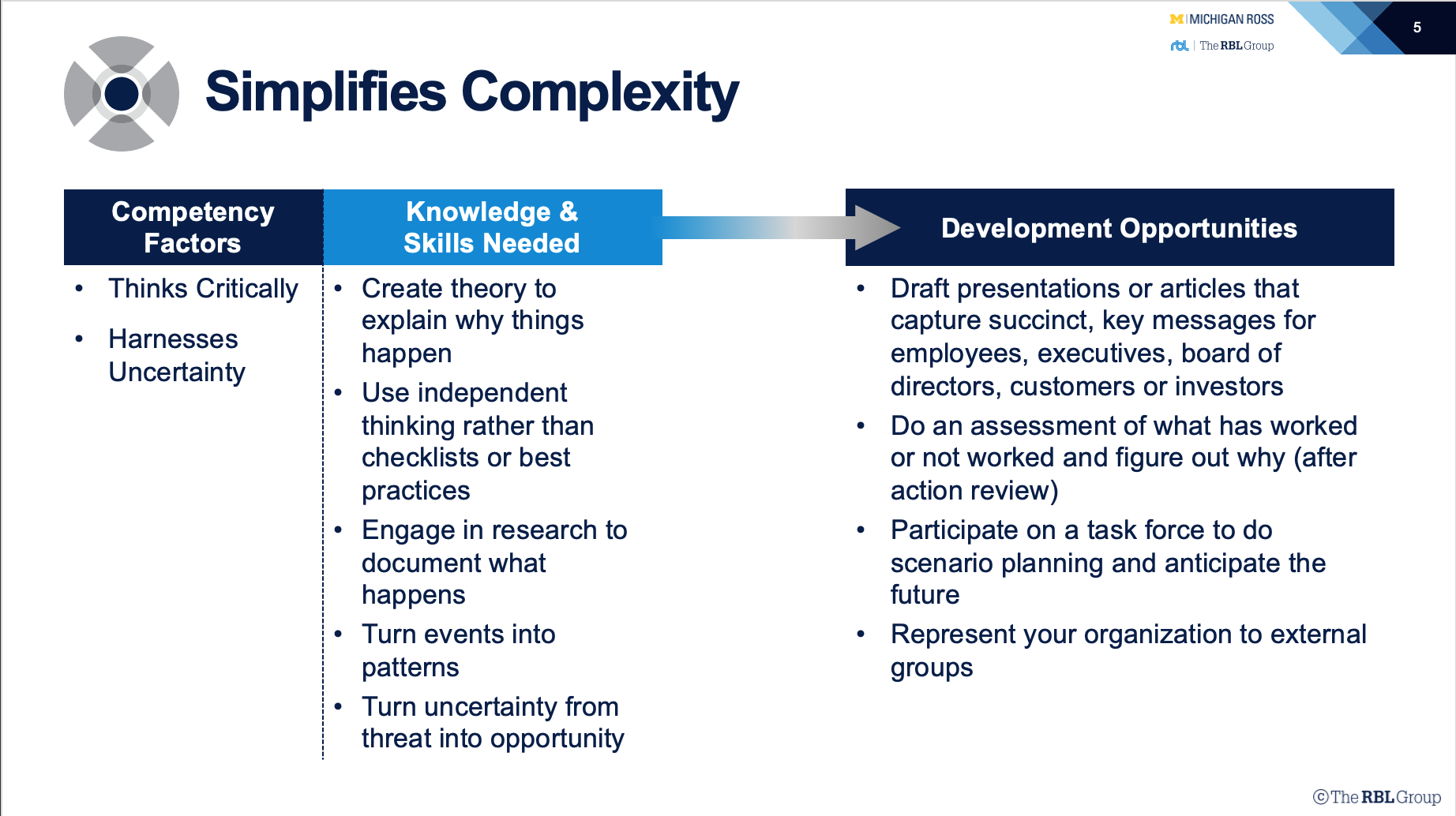
We’ve just shared a few ideas around personal development for each of the five domains. Most likely you can think of more. Ask yourself: “What is going to be most important thing for me to focus on to bring even more value to my stakeholders?” And, “What do they want from me?” As you decide on your personal action plan to be a more effective HR professional, always keep that outside-in hr perspective handy. In the end, if your stakeholders don’t care about the area you’re developing, then why are you doing it?
RBL is prepared to help individuals, departments, and businesses develop the HR competencies that deliver business results. Contact us to get started.
